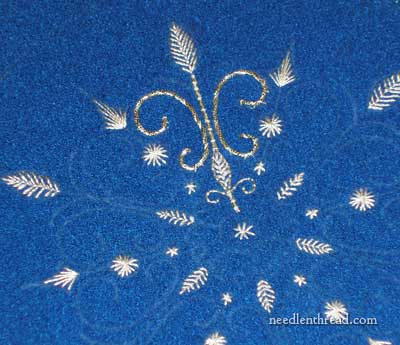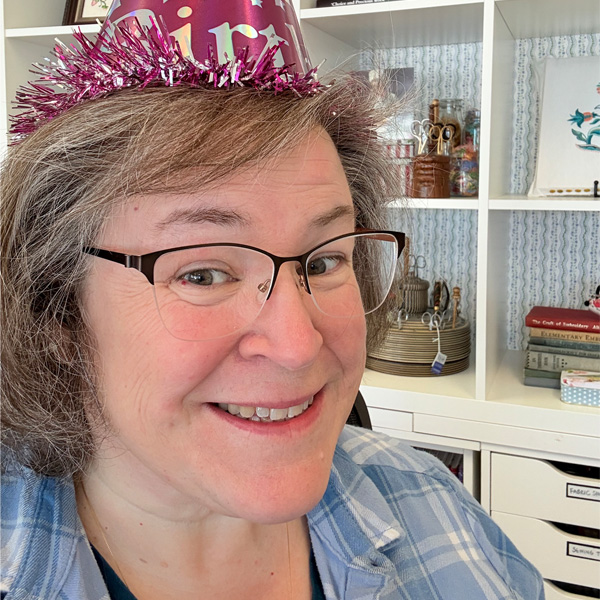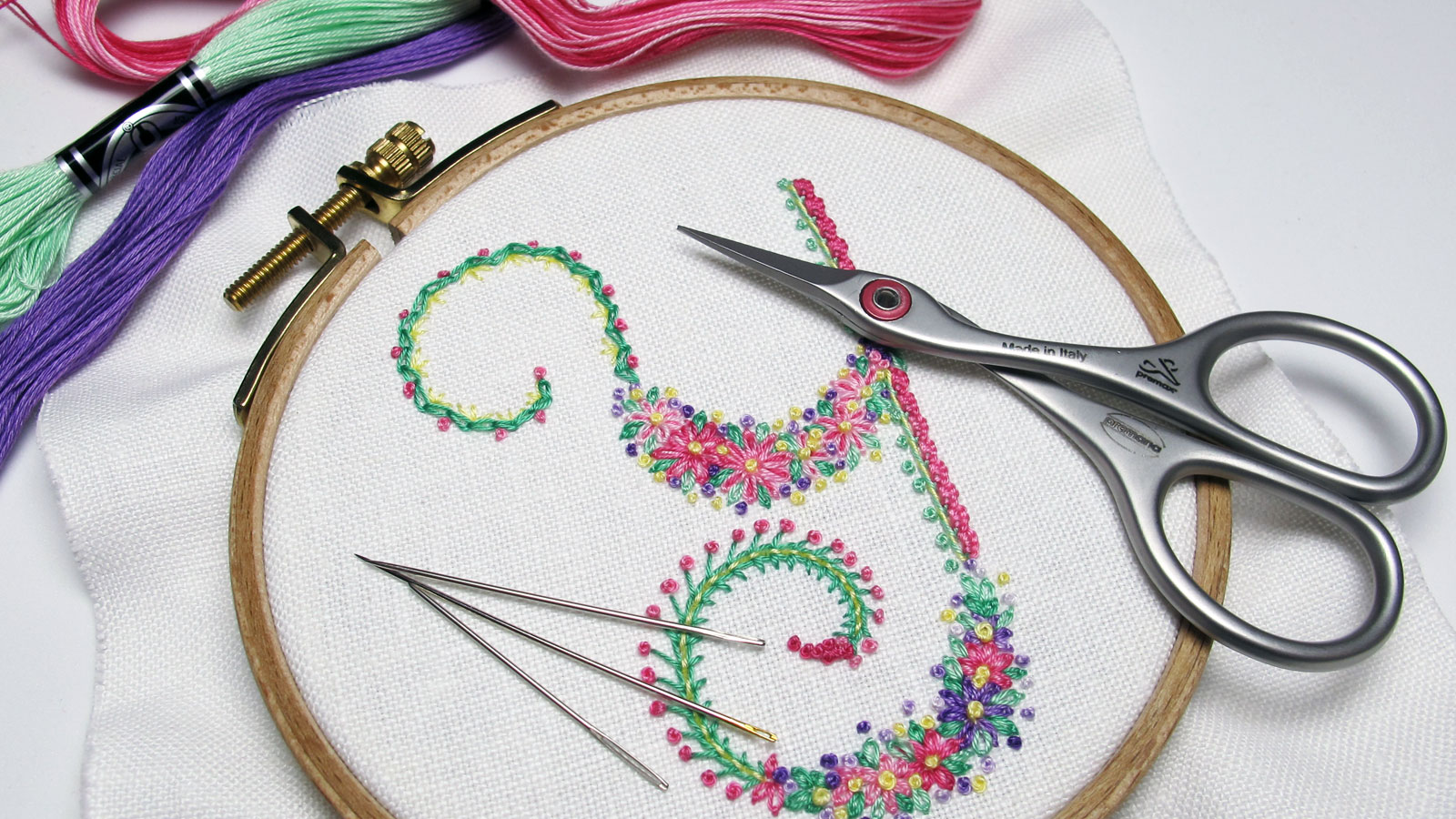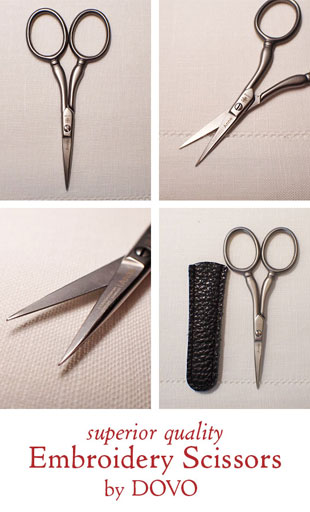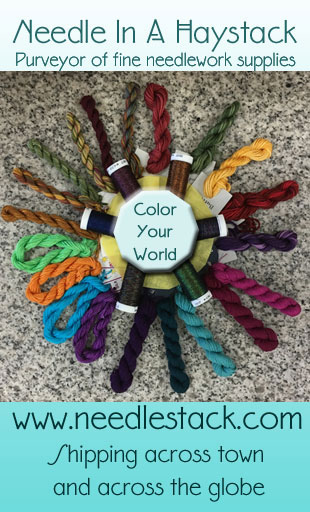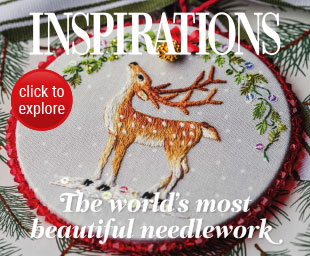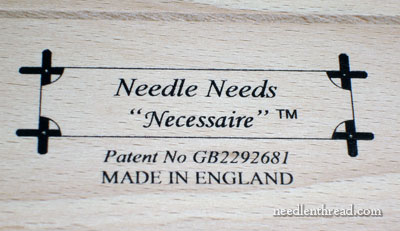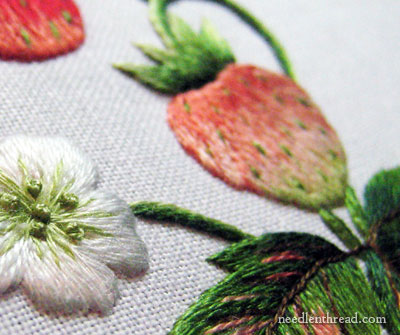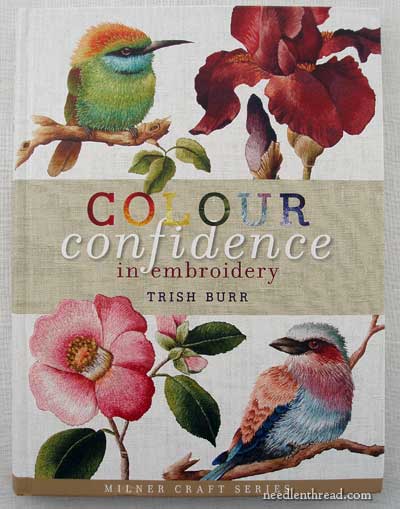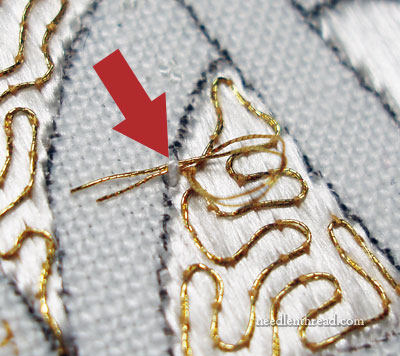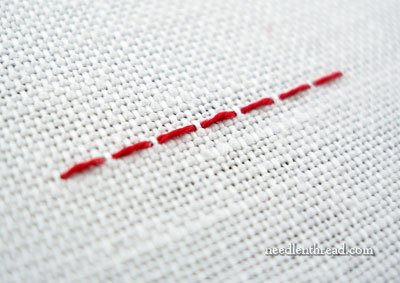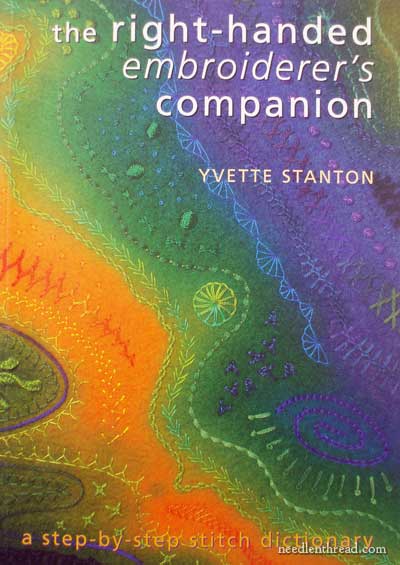December 17, 2011
Silver Thread, Silver Thread…
This is a little update on the Silver, Silk, and Suede Embroidered Snowflake project.
There’s a little bit of silver on the snowflake, finally! With out-of-town company and Christmas preparations, I haven’t had a chance to do much stitching this week, but I did want to at least try the silver threads on this pseudo-suede fabric stuff. As it turns out, this is a tough kind of fabric for sinking real metal threads into, so I had a bit of a time with it! The outcome isn’t too reprehensible, but I’ll do things a bit differently in the next section and hopefully smooth out some of the rough spots.
